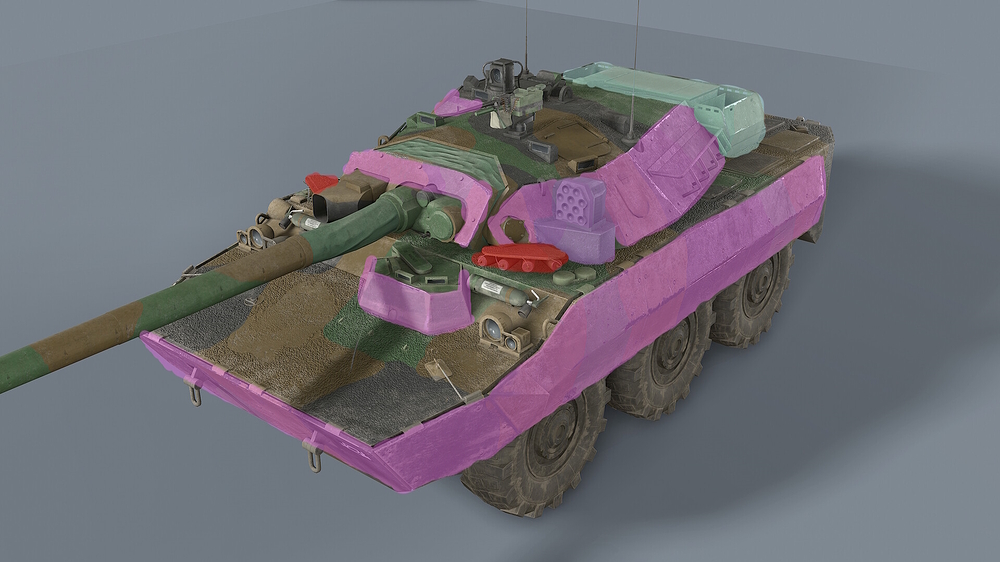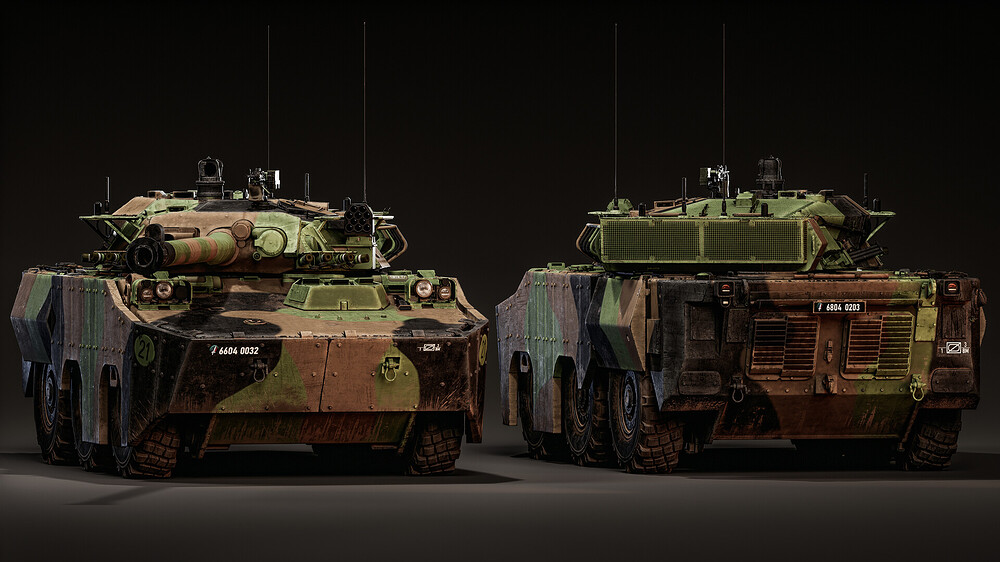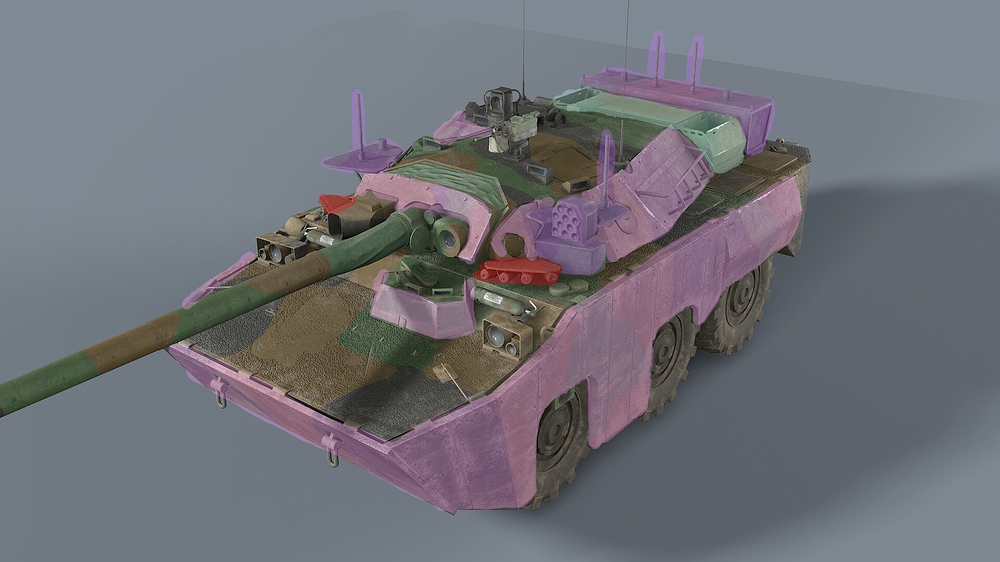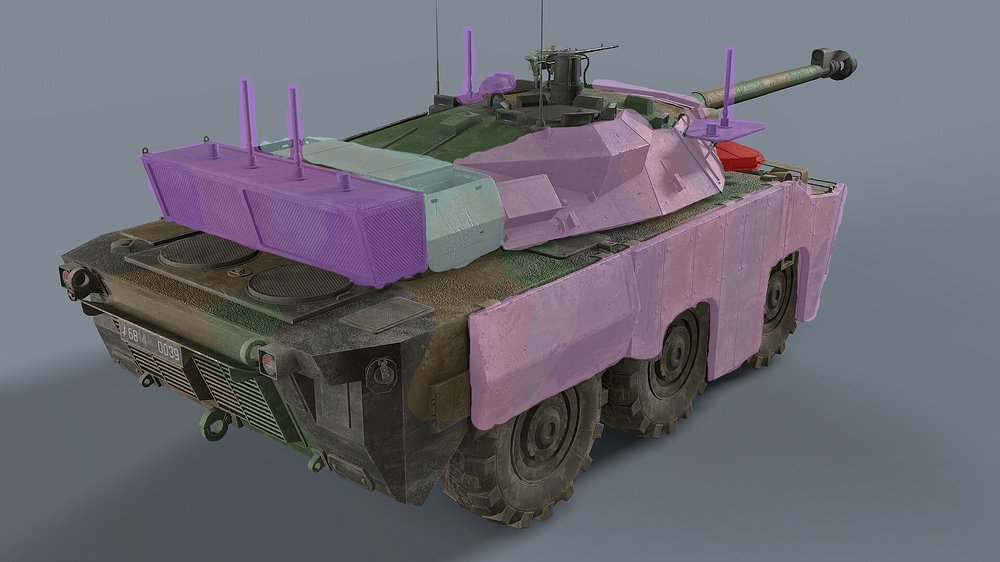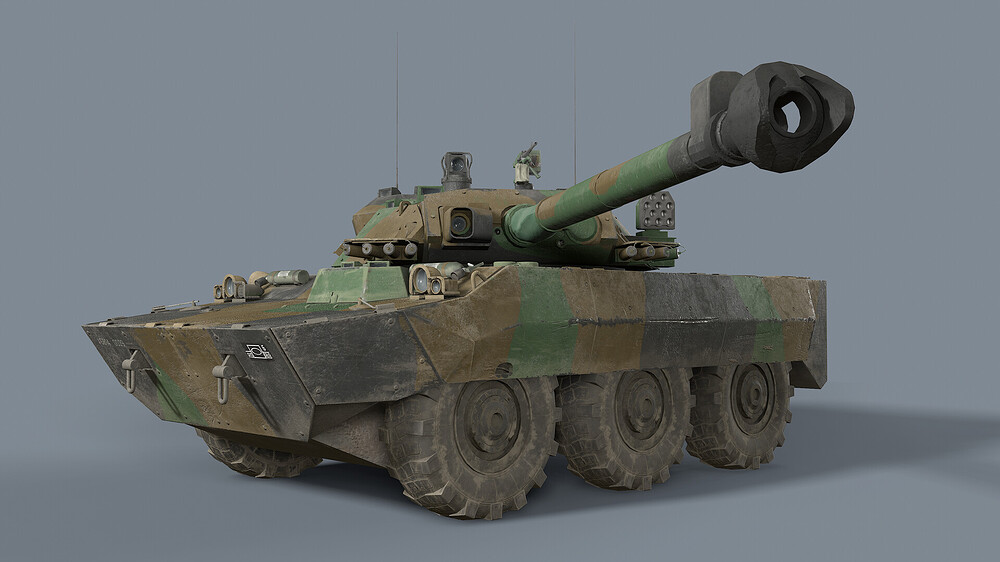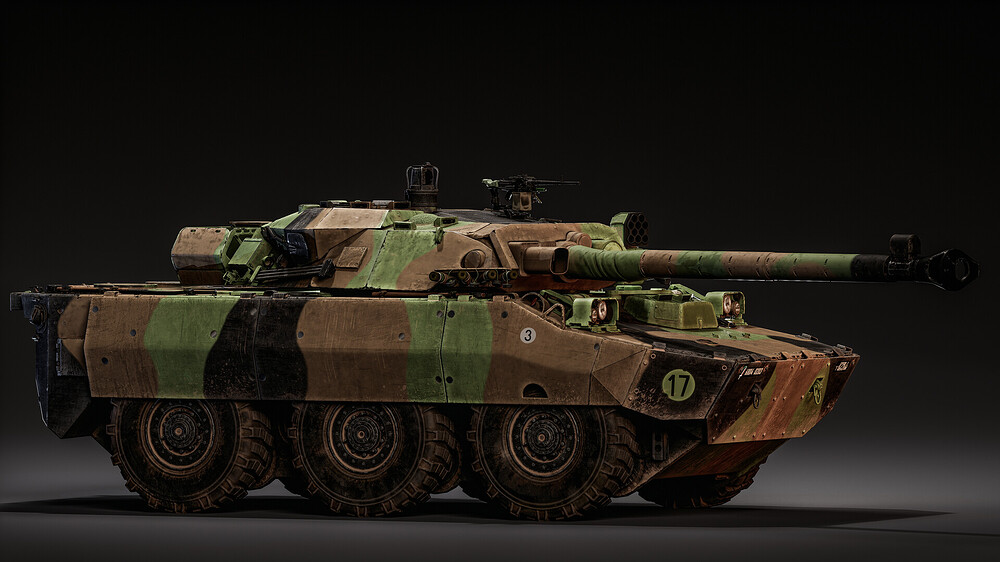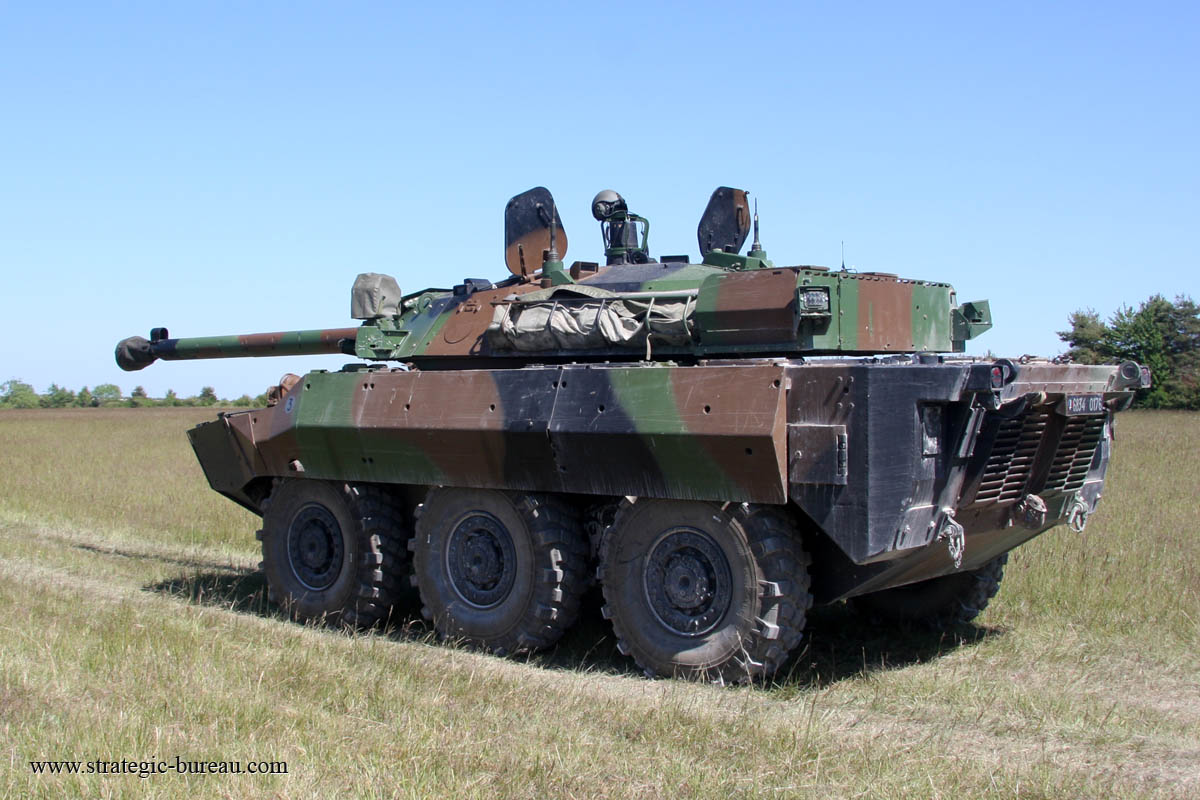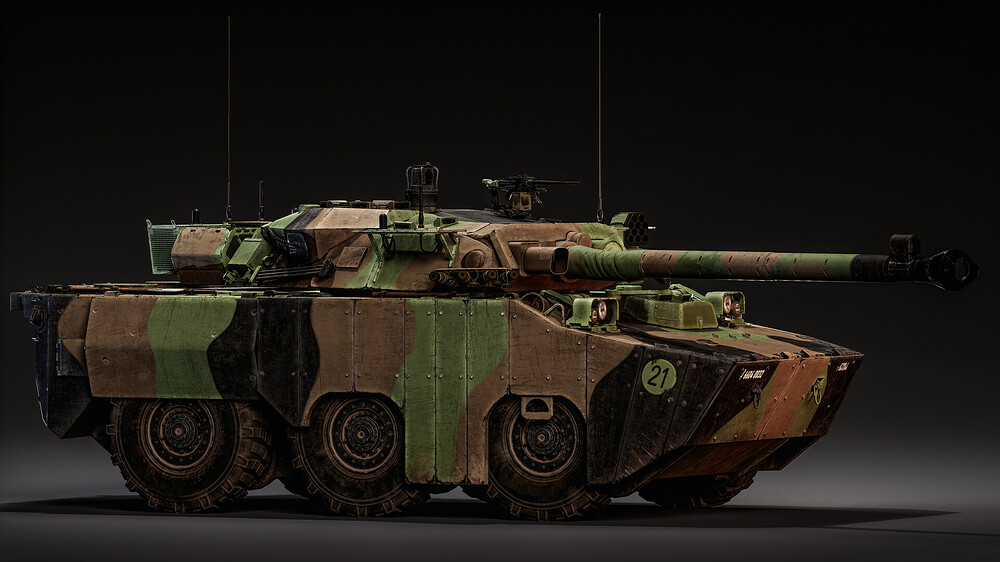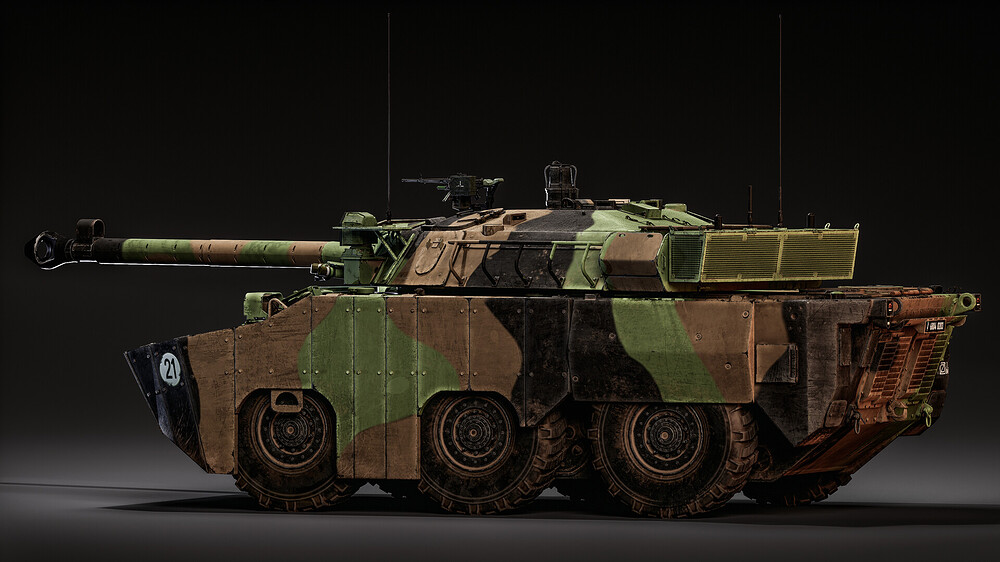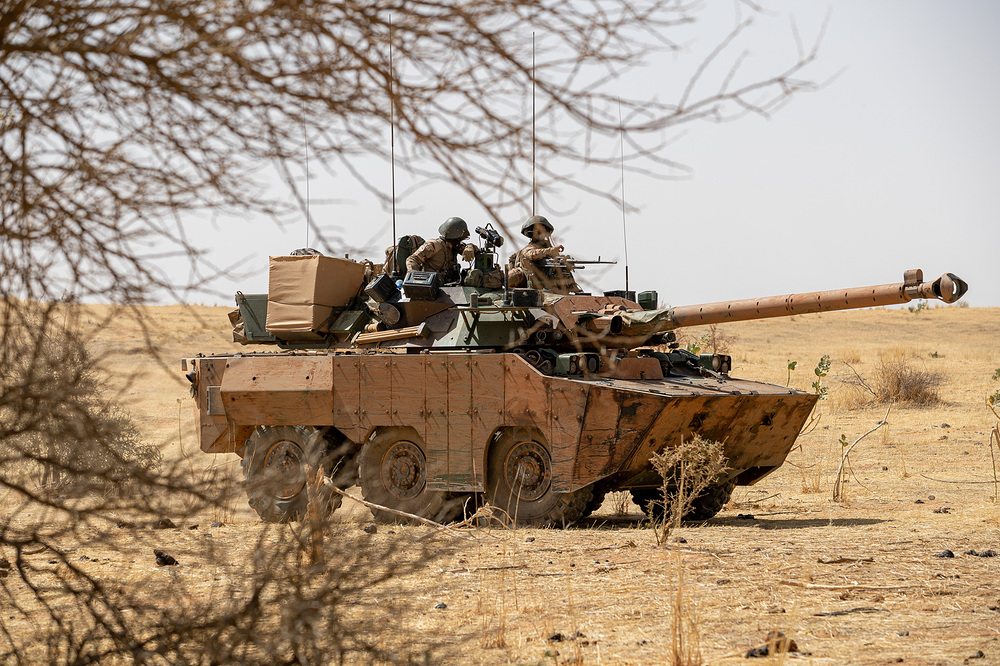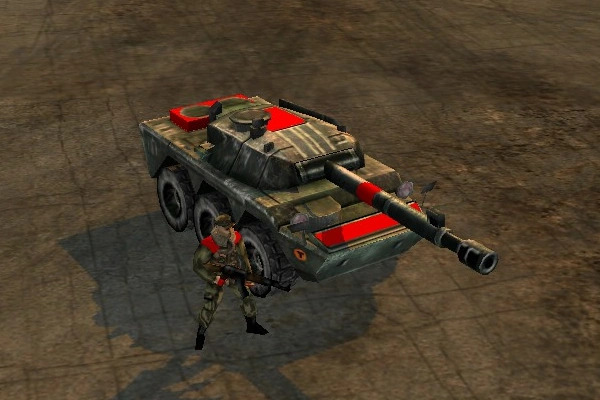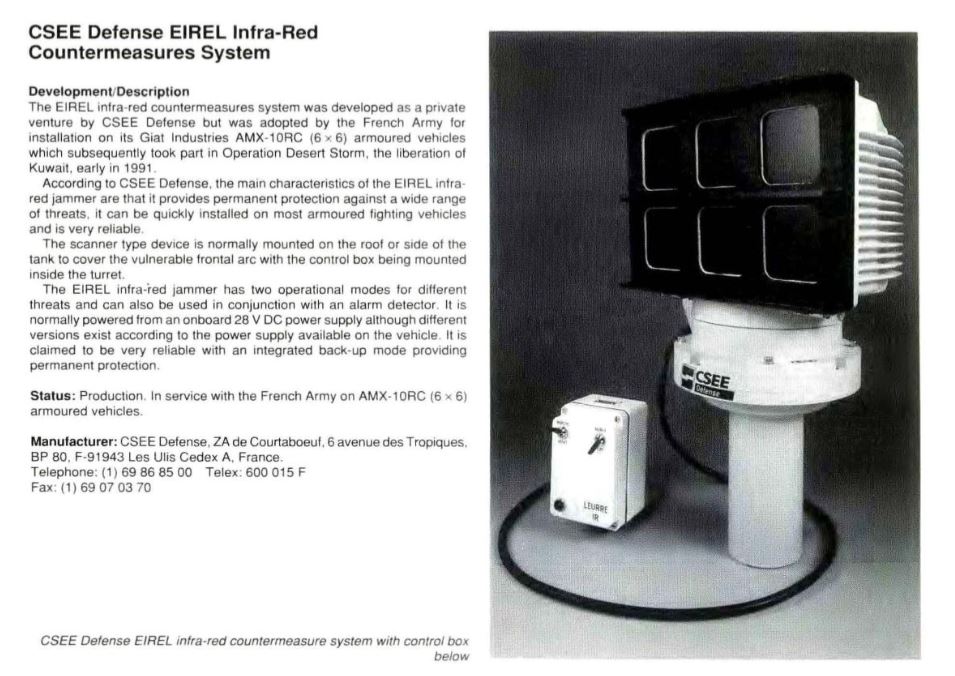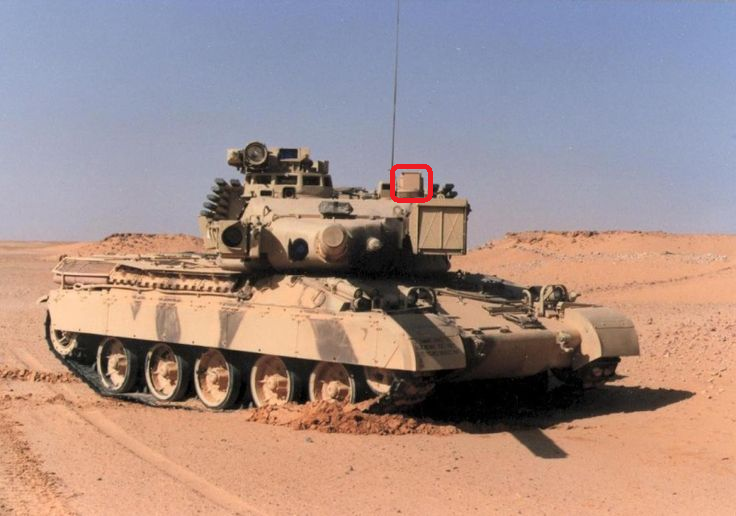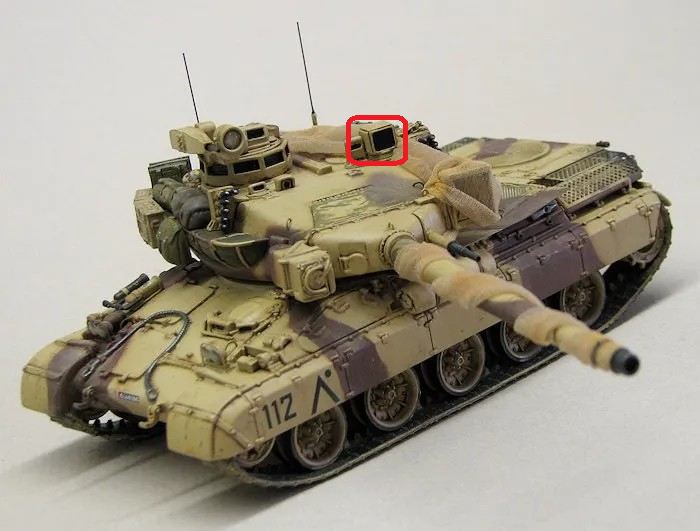
The SEPAR kit is a set of composite armor on the sides and underside of the hull, which entered service in 2017.
Spoiler
In the early 1960s, the Army General Staff considered replacing the armored reconnaissance vehicle (EBR), which had been in service with the French Army for about ten years.
Beginning in 1970, a program aimed at developing an amphibious armored vehicle with a weight range of 10 to 15 tons emerged, and the AMX-APX (later Giat) began development of the AMX-10 P, a tracked light armored vehicle intended to replace the AMX-13 VCI. The then director general of the AMX-APX had the idea of designing a wheeled version of the AMX-10P equipped with a cannon. This six-wheel drive version would be called the AMX-10 RC (RC for “Roue Canon” in french, wheel and cannon in english). Three prototypes would be built. The French Army placed an initial order for 190 vehicles with GIAT in 1977, with deliveries lasting from 1977 to 1986, for a total of 350 vehicles.
The AMX-10 RC is equipped with a hydropneumatic suspension allowing the driver to adjust the ground clearance. This can vary from 21 to 60 cm, depending on the terrain.
The suspension also allows the vehicle to be tilted forward, backward, or sideways, depending on tactical needs. The vehicle lacks steering wheels, but uses skid steering, which operates similarly to a tracked vehicle.
Originally, the vehicles were powered by a Renault HS 115 diesel engine, developing 260 hp. However, the final production batches received a more powerful Baudouin model 6F 11 SRX engine developing 280 hp. By 1995, all previous vehicles had been equipped with this engine.
The vehicle could reach 80 km/h on the road and 65 km/h off-road, both forward and reverse, with a range of 800 km. The transmission had four forward and four reverse gears. The vehicle was also amphibious, propelled by two waterjets up to a speed of 7.2 km/h. A trim vane had to be raised before entering the water. The vehicle was air-transportable.
The vehicle’s base armor was made of welded 7020 aluminum alloy, and the armor was designed to protect against artillery projectiles fragments & medium-caliber weapons, namely most 20- to 30-mm automatic cannons.(the data in game for this are wrong and largely underestimated !!)
The crew consisted of four men. The driver sat in the hull on the left side. He could use a hatch and three periscopes. The commander sat at the right rear of the turret, with a hatch above his head. It has six periscopes and an M398 swiveling sight. The tank commander can take control of the gunner and rotate the turret or aim the gun. The gunner sits at the front right of the turret. He also has three periscopes and a day sight with thermal imager, plus a laser rangefinder. The loader, meanwhile, sits or stands in the middle left of the turret and has a hatch and three periscopes. He is responsible for operating the AN-F1 machine gun on the vehicle’s roof, and has 16 main gun shells ready for rapid loading within easy reach.
The vehicle’s main gun is a 105mm F2 medium-pressure cannon, specially designed for light vehicles. This gun can fire high-explosive, anti-tank, armor-piercing fin-stabilized sabot, and smoke shells.
In 1994, the French Army decided to modernize its fleet of AMX-10 RC vehicles. The planned upgrade included a new turret and gun, armor plating, and some electronic modifications and upgrades. However, due to budgetary constraints, this upgrade was not approved.
The AMX-10 RC upgrade problem was finally resolved in 2000, when a contract was signed with Nexter Systems to upgrade 256 vehicles to a new standard. The upgraded AMX-10 RCR (the last R stands for “Renovated”) was expected to remain in service until 2020-2025, when it was replaced by the new Jaguar EBRC. RCR Deliveries began in 2005.
Then developed by Nexter (formerly GIAT Industries), and entering service in 2017, the AMX 10 RCR SEPAR is a direct evolution of the AMX 10 RCR with the addition of composite armor protection on the hull sides and underside, and an electronic devices jamming system.
| Object | Description |
|---|---|
| Engine | Baudouin GF-11SX diesel, 280 ch |
| Transmission | GIAT ARE 4AD60. 4 fw/3 rv. Robotization of the gearbox, with removal of 4th reverse gear, limiting the speed to 50kmh in reverse. 85kph forward. |
| Amphibious mobility | removed to install batteries in order to increase on-board electrical power |
| Road range | 800 km |
| Internal fuel capacity | 520 litre |
| Hull length | 6.24 m (9.15 m with the barrel) |
| Hull width | 2,78 m |
| Height | 2,56 m |
| Weight | 17 tons |
| Ammunition | OCC 105 F3 ; OE 105 F3 ; O FUM PH 105 F3 ; OFL 105 F3 |
| Auxiliary armament | 7.62mm AN-F1 machine gun under loaders control; coaxial 7.62 AN-F1 machine gun, main gun aiming slaved |
| Gunner Optics | 10x7° SOPELEM M504 sight fitted with a laser rangefinder + Thomson-CSF DIVT-16C gen II (instead of 1990 DIVT-16 1st gen) |
| Commander Optics | 2x38° to 8x9° M389 optical periscope with IR nvd + Acces to take control of the gun |
ammunition characteristics |
|
| OCC 105 F3 | 5.7Kg; 1120m/s; HEAT-FS; 350mm RHA 0° |
| OE 105 F3 | 7.2Kg; 800m/s; high-explosive fragmentation; 2Kg TNT |
| O FUM PH 105 F3 | 7.1Kg; 800m/s; phosphorus smoke shell with incendiary characteristics |
| OFL 105 F3 | 3.8Kg; 1400m/s; APFSDS 350mm 60°RHA at 0m (the data in game for this shell are wrong and largely underestimated !!) |
SEPAR Specification |
|
| Weight | 21 tons |
A SIT-VI battlefield management system, which allows vehicles to exchange battlefield information with each other and with the command structure. Not useful in game, unless by reducing the delay and increase the accuracy of the artillery barrage.
An infrared missile jammer, the EIREL, was installed on the left front of the turret, jamming missile guidance by 20° horizontally and 10° vertically. Already in the game on the AMX30B2 Brennus and VBCI.
A new, more advanced thermal imaging camera was installed for the gunner, and commander can use it.
The overall protection was reinforced with 10mm very high hardness steel plates side and front of hull and turret. It adds 1 tons to the vehicle.
Integration of 8 Galix smoke launchers, two sets of four launchers at the front of the turret on each side.
Increased electrical power.
Removal of the amphibious propulsion system and the front wave guard.
Electronic management of the hydropneumatic suspension
Modification of the storage spaces in the nape of the turret. including in particular the storage of spare Galix smoke grenades in the box.
Robotization of the gearbox, with removal of 4th gear in reverse, limiting the speed to 50kmh in reverse.
Visible RCR Modifications in pictures
note the absence of the wave shield
In pink, spaced up-armor
In purple, EIREL soft-kill APS
In red, Galix grenade launcher
In blue-grey, turret neck baskets
The SEPAR includes all the RCR modernizations with a few extras:
Added Electronics Device jamming system bubble. * This could be used to jam drone spotting ? Let’s say a 50m radius around the vehicle, which could prevent any vehicle within this radius from being spotted by drones, allies or ennemies. This would be an interesting new mechanic, applicable to other vehicles equipped with similar electronics jamming systems.
Addition of a box on the neck of the turret containing the vetronics of the Electronic Device jamming system bubble were added to .
IED self-protection emitters were added to the front of the turret on each side.
The side armor was reinforced with 80mm high-strength composite plate (similar to that found on VBCIs). It’s a pretty heavy addition, about 4 tons
The underbody was reinforced with a blast-absorbing armor plate under the chassis.
Visible SEPAR Modifications in pictures
note the absence of the wave shield
In pink, spaced up-armor
In purple, EIREL soft-kill APS & jammer vetronics
In red, Galix grenade launcher
In blue-grey, turret neck baskets
Spoiler
RCR:
note the absence of hydrojets.
SEPAR Up armor:
And if the developers want to have fun, they can even add the cage armor. That said, it has never been seen in service.
It also improves fire control slightly due to the improved gunner’s thermal imaging camera equivalent to that of the SK-105A2 or others gen II. All these changes makes it a vehicle just as balanced as its base version. It would be very interesting to be able to modulate between good protection and good mobility by having the choice of installing or not the SEPAR armor, which would be available as a researchable protection module at level IV. The developers could also, if they wish, explore the new mechanics explained above, which would mean that the vehicle, despite its significant weight gain if we mount the SEPAR kit, would be immune to drone spotting, and can apply this effect to all vehicle within 50m radius, whether they are allies or enemies.

Would you like to see the AMX-10RCR + SEPAR (rank IV modification):
- Yes in regular Tech Tree
- Yes as Squadron vehicle
- No, and I’ll explain why
In wich BR ?
- 8.3
- 8.7
- 9.0
- I answered No in the previous poll
Sources for data and images:
Spoiler
-AMX-10RCR
AMX-10 RC & RCR - Tank Encyclopedia
AMX-10 RC — Wikipédia
https://www.artstation.com/artwork/YBayY6
https://www.artstation.com/artwork/RYae3m
Véhicule blindé AMX 10 RCR SEPAR : entre efficacité et vulnérabilité au combat
Photoscope AMX 10 SEPAR
https://www.reddit.com/r/TankPorn/comments/h1792a/french_foreign_legion_amx10rcr_separ_in_the_sahel/
http://www.strategic-bureau.com/amx-10rc-char-leger-france/
AMX-10 RCR SEPAR with slat armor | militaryphotoreport.blogs… | Flickr

